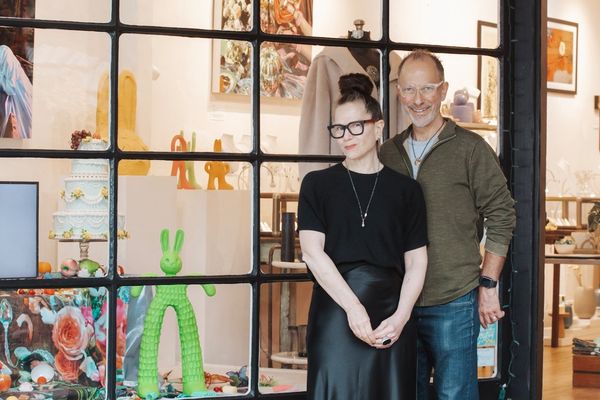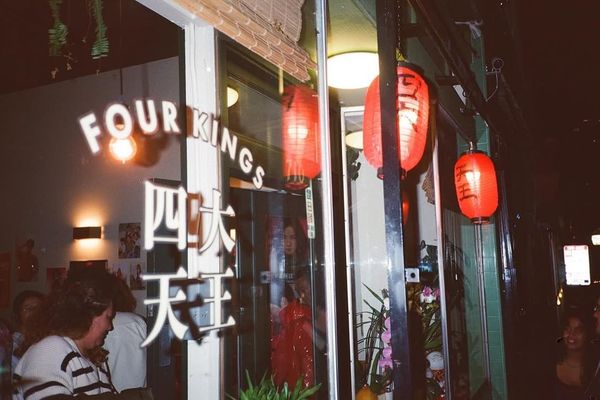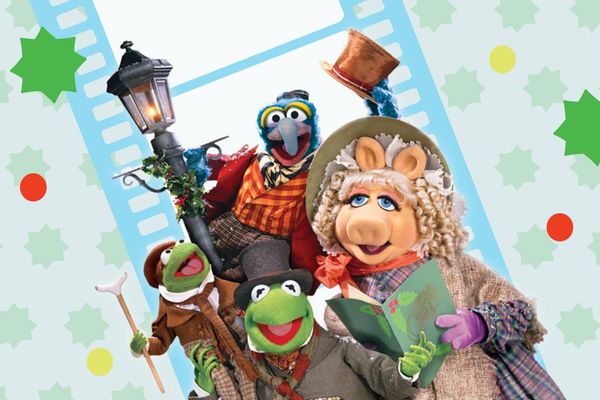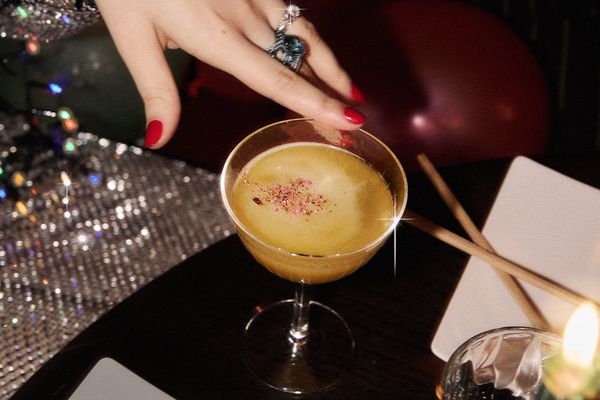Is San Francisco a gay city—or just a gay man's city?
When I moved to San Francisco five years ago, I'd internalized a very powerful myth—that this place was the gayest city in America, the streets paved with pride flags, and that my wife and I would fit right in.
I came out and of age in Northampton, Mass., in the '90s—I met Sarah at the women's college we both attended, and we strolled the small-town streets hand in hand, giving the lesbian nod at everyone we saw. Friends, it was high times. We married at City Hall in Cambridge, Mass., the first day we were legally able to do so and moved to San Francisco 10 months later. We didn't decide to relocate here because of its reputation as a particularly homo-friendly town, but let's just say that we didn't really consider Omaha, Amarillo or Provo.
We did fit in, to be sure. Nobody flinched at dinner parties when we said we were married, or at the doctor's office, either, when we said that yes, we were sexually active and no, it wasn't with a man. But what we weren't able to do was find a community. Perhaps I'd seen too many episodes of The L Word, but I imagined falling into a similar crew here, so convinced was I that this was the lesbian promised land. I even remember my wife emailing me a link to the Lexington Club's website, just a stone's throw from our new apartment, thinking it would be our neighborhood hangout. Little did I know it was also one of only two lesbian bars in the entire city (the other, of course, is Bernal Heights' Wild Side West).
Five years later, I now know: San Francisco is America's gayest city—for men. According to a 2004 study published in The Gay and Lesbian Atlas (Urban Institute Press), the Castro has the highest concentration of same-sex male couples of any neighborhood in the entire country. But you don't need a study to tell you that. A quick trip to that neighborhood (or SoMa) will remind you—in a very public way—of our city's reputation as a gay man's mecca. There are more than 30 bars that cater to them, from the double-martini palace, Martuni's, to the aptly named Stud. But it's not only bars—it's the gyms and the restaurants and the shops of the Castro, which also cater to the gay male contingent in a very overt way (hello, Sausage Factory).
On the contrary, by the numbers, more lesbians live in Provincetown, Mass., and Decatur, Ga., than here in SF—in any neighborhood. And aside from the Lexington Club, the lesbian community's socializing is confined to one-off nights at bars—the fourth Wenesdays and third Sundays that remind a gay woman that there is no lesbian scene here. Says Kristin Smith, a 33-year-old Mission-dwelling lesbian and managing editor of Curve magazine; “The lesbian watering holes, like the Lex and Wild Side West, tend to feel like extensions of people's living rooms. And keeping track of the one-off lesbian nights in boys' clubs is like keeping track of the street-cleaning schedules.” This might be a nice, safe, welcoming place to start a family, begin a career or retire, but it's hardly the nexus of the lesbian scene.
I know the jokes, the ones about cats and moving trucks and bed death. Is that what's holding us back from developing a full-fledged scene of our own? Are all the lesbians in town at home crocheting receiving blankets for their not-yet-conceived babies and nursing cups of herbal tea? Are gay women in the city uninterested in a scene, or have men supplanted our scene?
Lucy Laliberte, a 31-year-old producer's assistant at Pixar who lives in Noe Valley with her girlfriend, admits she might be a cliché—the young, coupled woman who would rather stay at home than head to a dance club. Still, she recognizes there's a dearth of lesbian activity: “There's no place where lesbians go to hang out. People say Bernal Heights, but that has just as many straight families pushing strollers. There is no equivalent to the Castro.” Smith posits a theory as to why this might be the case. “Gay men tend to make more money than any other demographic, or at least have more disposable income. Lesbians, on the other hand, tend to make the least. The gay men of the Castro have been able to preserve the spot, protect it from encroachment, largely because they can afford to do so.” She notes that areas like Bernal Heights are more affordable, making them appealing to a broader swath of the population and diffusing a burgeoning lesbian community.
Lexington Club owner Lila Thirkield still thinks we've got it pretty good. “I do think SF is an awesome place for lesbians,” she says. “I've heard it all—women don't go out, the whole U-Haul thing, the fact that gay women aren't fucking like rabbits, unlike their male counterparts.” She echoes what Smith says, noting, “So much of this is economic.” But would she suggest someone open a lesbian bar in the city? “It's really hard and difficult to sustain,” she replies. “You'd have to create something so magnetic that everyone would want to go.”
Historically speaking, there hasn't been much overlap between the gay male and female social scenes, something that seems at least anecdotally true today—on the average Saturday night at Moby Dick or Badlands, you're not going to find many women in the crowd, lesbian or otherwise. But Smith thinks it may not be as bleak as I'd like to believe, citing a recent Sunday gathering at El Rio. “I think there's a shift among younger queers to be less separatist.” This seems like encouraging news—heartwarming, even—to imagine gay men and women evolving toward inclusiveness in the years to come. In 10 years, gay men and lesbians may well be sharing the bar at Twin Peaks, at which point I will be 42, and probably too preoccupied with knitting, tea drinking and baby tending to care about the scene. A girl can dream, right?
Got feedback? Send our editors a letter or add a comment below.




















